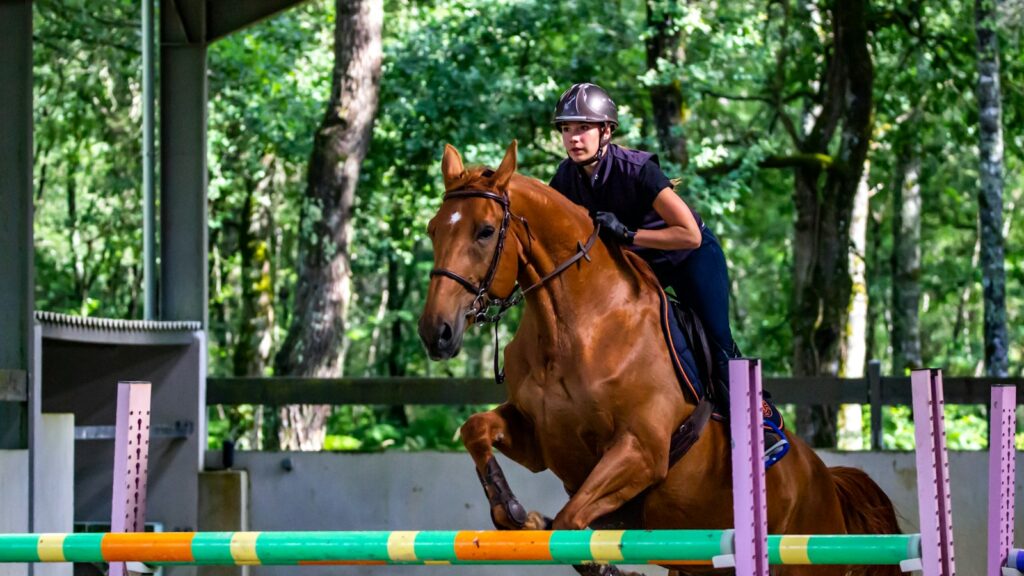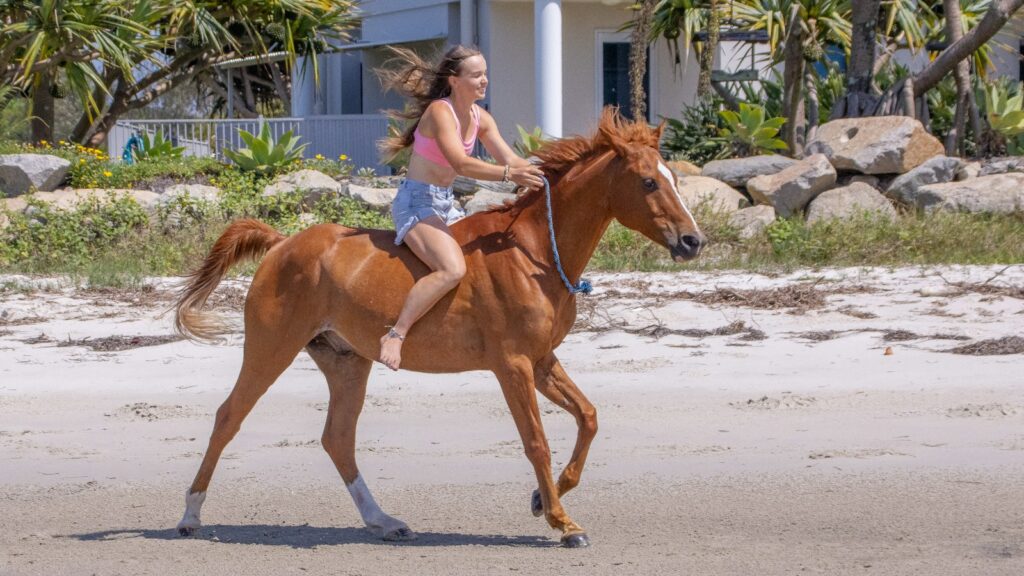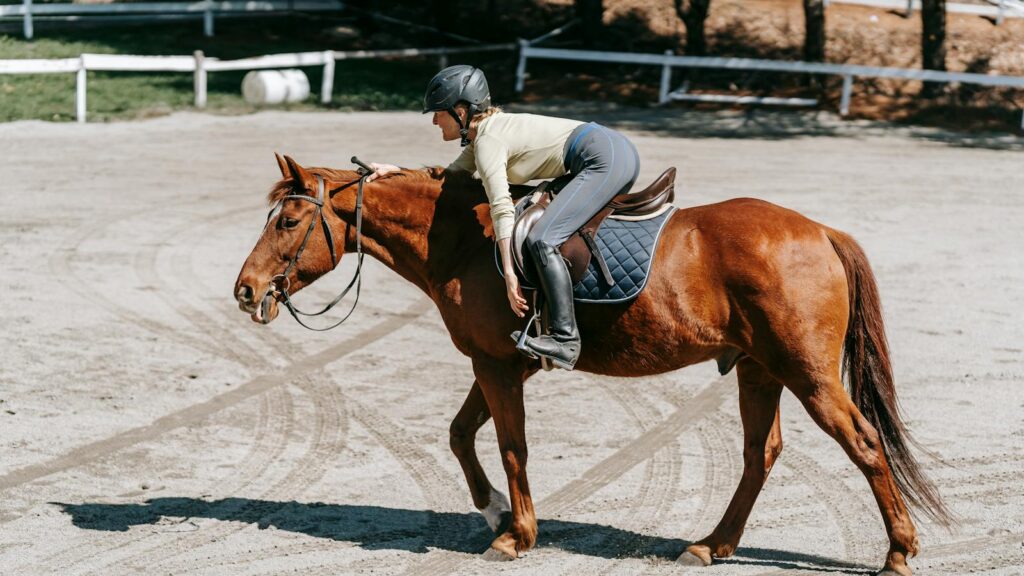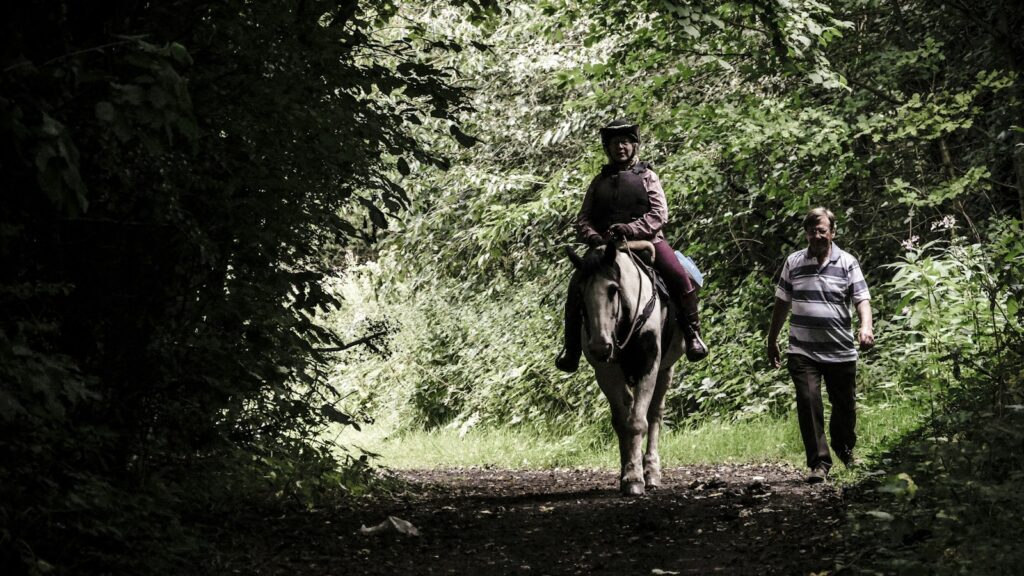Bareback riding, the practice of riding a horse without a saddle, has deep historical roots dating back to when humans first domesticated horses. What began as a necessity has evolved into a contentious training method in modern equestrian circles. Today, equestrians, trainers, and veterinarians hold passionate and often conflicting views about the benefits, risks, and ethical considerations of bareback riding in contemporary horse training. This article explores the multifaceted debate surrounding bareback riding, examining traditional practices against scientific understanding of equine welfare, performance enhancement claims, and practical safety considerations that influence modern approaches to this ancient horsemanship technique.
The Historical Context of Bareback Riding

Bareback riding predates the invention of saddles, with evidence suggesting humans rode horses without equipment as early as 4500 BCE. Ancient civilizations from Native American tribes to Mongolian horsemen relied on bareback riding as their primary method of equine transportation and warfare. This historical practice was not merely born of necessity but developed sophisticated techniques that maximized the rider’s connection with their mount. In many indigenous cultures, bareback riding became intertwined with spiritual practices and coming-of-age ceremonies, highlighting its cultural significance beyond mere transportation. The skills developed through these traditions—balance, sensitivity to the horse’s movements, and core strength—continue to influence modern equestrian practices despite technological advancements in riding equipment.
Physical Benefits for Riders

Proponents of bareback riding emphasize its unparalleled ability to develop a rider’s seat, balance, and core strength. Without stirrups and saddle to rely on, riders must engage their core muscles continuously to maintain position, resulting in improved muscle tone and proprioception that transfers to all riding disciplines. Research has shown that regular bareback riding can significantly improve a rider’s ability to follow the horse’s motion, leading to more effective communication through weight aids and body position. This heightened awareness often translates to better riding even when returning to saddled riding, as riders maintain the body awareness developed through bareback practice. Additionally, the increased physical demands of bareback riding create a more intense workout, burning approximately 40% more calories than riding with a saddle according to some fitness studies.
Connection and Feel Arguments

Many experienced trainers advocate for bareback riding as an essential method for developing what horsemen call “feel”—the intuitive connection between horse and rider. Without the barrier of a saddle, riders can perceive subtle shifts in the horse’s muscles, temperature changes, and breathing patterns that might otherwise go undetected. This intimate connection potentially allows riders to respond to the horse’s needs more quickly, addressing tension or confusion before it escalates into problematic behavior. Proponents suggest this heightened awareness creates a feedback loop where horses become more responsive to subtle rider cues, developing what some trainers call “whisper-soft” communication. Historical training methods from classical dressage to Native American horsemanship have incorporated bareback riding specifically to develop this sensitivity, suggesting the practice has enduring value across cultural boundaries and riding disciplines.
Concerns About Horse Welfare

Critics of bareback riding raise significant concerns about potential negative impacts on equine back health. Without the weight distribution provided by a properly fitted saddle, a rider’s weight concentrates pressure on the horse’s spine and sensitive withers area. Equine veterinarians point to research showing that rider weight directly on the spine can potentially cause soft tissue damage, especially during extended sessions or with heavier riders. Thermal imaging studies have revealed “hot spots” developing along the spine after bareback riding sessions, indicating increased pressure and potential discomfort. These concerns are particularly relevant for horses with conformational issues such as low or swayed backs, where the natural support structure may already be compromised. However, proponents counter that brief, mindful bareback sessions with appropriately sized riders may pose minimal risk to horses with healthy conformation.
Scientific Perspectives on Pressure Distribution

Modern equine biomechanics research has provided valuable insights into the pressure distribution patterns of bareback riding compared to saddle use. Pressure mapping technology has revealed that bareback riders create concentrated pressure points over the horse’s vertebral processes rather than distributing weight across the supportive muscle bands that run parallel to the spine. Studies conducted at various veterinary universities have measured pressure peaks during bareback riding that sometimes exceed recommended safety thresholds, particularly during sitting trot and canter work where the rider’s body weight repeatedly impacts the horse’s back. However, these same studies acknowledge significant variations based on rider skill level, with experienced bareback riders demonstrating ability to distribute their weight more effectively than novices. The science suggests a nuanced reality: while saddles generally provide superior weight distribution, skilled bareback riding with appropriate horses may mitigate many of the biomechanical concerns.
Safety Considerations for Riders

Safety concerns represent perhaps the most significant practical argument against bareback riding in modern training programs. Without stirrups to break a fall or a saddle to provide stability, riders face increased risk of serious injuries during unexpected horse reactions or losses of balance. Industry safety statistics consistently show higher injury rates for bareback riders compared to those using appropriate tack, with head injuries being particularly concerning. Even professional riders acknowledge the inherent risks, with Olympic equestrians typically limiting bareback work to controlled environments with extremely reliable mounts. Insurance considerations further complicate the issue, as many equestrian facilities face liability concerns when allowing bareback riding on their premises, particularly with young or inexperienced riders. These legitimate safety concerns must be balanced against the potential benefits when evaluating bareback riding’s place in modern training methodologies.
Bareback Riding in Youth Training Programs

Youth equestrian programs often incorporate supervised bareback riding as a fundamental skill-building exercise, though approaches vary widely. Organizations like Pony Club and 4-H typically introduce bareback riding in controlled environments after young riders have established basic balance and safety awareness with conventional tack. These progressive programs cite developmental benefits including improved confidence, enhanced body awareness, and accelerated skill development that transfers to all riding disciplines. Research on youth physical development suggests that the proprioceptive challenges of bareback riding can benefit neurological development during key growth phases. However, responsible youth programs employ strict safety protocols including approved helmets, controlled environments, and appropriate horse selection to mitigate risks. This balanced approach acknowledges both the developmental benefits and safety considerations unique to young riders.
Cultural Perspectives and Traditional Horsemanship

Indigenous and traditional horse cultures worldwide maintain bareback riding as an integral component of their horsemanship practices, offering valuable perspectives on its role in training. Native American tribes including the Lakota and Comanche historically developed extraordinary horsemanship skills through bareback riding, with training beginning in early childhood through progressively challenging exercises. Similarly, traditional Mongolian horsemen continue to practice techniques refined over centuries, demonstrating remarkable balance and communication with their horses without saddles. These cultural traditions emphasize a holistic approach where rider development and horse welfare exist in balance rather than opposition. Modern “natural horsemanship” methods often draw inspiration from these traditional practices, incorporating elements of bareback work to develop the rider’s feel while respecting the horse’s physical and psychological needs. These cultural perspectives suggest that bareback riding, when approached with appropriate skill development and horse selection, can be integrated into ethical modern training programs.
Competitive Applications in Modern Equestrian Sports

While most competitive equestrian disciplines require saddles, bareback riding maintains relevance as both a training tool and a specialized competitive skillset. Olympic disciplines like dressage and jumping incorporate bareback sessions strategically during training to enhance rider position and sensitivity, with top competitors crediting these practices for developing their exceptional feel. Beyond conventional disciplines, specialized bareback competitions have gained popularity in recent decades, from Native American-inspired bareback racing to choreographed bareback freestyle exhibitions that showcase the artistry possible without equipment. Professional horse trainers often cite bareback work as crucial for developing the advanced skills required at elite levels of competition. This competitive dimension adds another layer to the debate, suggesting that despite controversies, bareback riding continues to demonstrate practical value for developing high-performance partnerships between horses and riders.
Equipment Adaptations: Bareback Pads and Alternatives

Modern equestrian manufacturers have developed various products attempting to capture bareback benefits while addressing welfare concerns, most notably the bareback pad. These non-structured cushioned pads provide some pressure distribution while maintaining the close contact feel that bareback advocates prize. However, veterinary opinion on these products remains divided, with some studies suggesting they may actually concentrate pressure in problematic ways without the weight distribution properties of a properly structured saddle tree. More advanced designs incorporate anatomical shaping and specialized materials like memory foam or gel inserts to better protect the horse’s spine. Beyond pads, some trainers advocate for treeless saddles or minimalist designs as a middle-ground approach that provides some structure while maintaining the enhanced feel of riding without conventional equipment. These equipment adaptations reflect the industry’s attempt to balance the benefits of bareback riding with welfare considerations.
Developing a Balanced Training Approach

Progressive trainers increasingly advocate for incorporating bareback work thoughtfully within a comprehensive training program rather than adopting all-or-nothing positions. This balanced approach typically involves short, purpose-driven bareback sessions focusing on specific rider development goals while using appropriate saddles for longer or more demanding work. Horse selection becomes critically important, with trainers carefully considering each horse’s back conformation, temperament, and fitness level before recommending bareback work. Many experienced professionals recommend starting with walk-only sessions before progressively introducing more challenging gaits as the rider’s balance and the horse’s comfort are established. This methodical progression allows horses to develop the muscular strength needed to carry a rider comfortably without a saddle, while riders can build the necessary skills to maintain balanced position. Such nuanced approaches acknowledge both the potential benefits and legitimate concerns while prioritizing horse welfare and rider safety.
Future Research Directions

The debate around bareback riding highlights significant gaps in our scientific understanding that future research could address. Longitudinal studies tracking horses’ physical response to different bareback riding protocols could provide valuable data on whether adaptations occur over time that might mitigate initial pressure concerns. More sophisticated biomechanical analysis comparing different rider techniques could identify optimal position strategies that minimize negative impacts on equine backs. Research investigating potential benefits to horse-rider communication through comparative studies of riders trained with and without bareback experience could validate or challenge traditional claims about enhanced feel. Additionally, veterinary research examining different horse conformations could establish clearer guidelines for which horses might safely engage in bareback work versus those for whom it presents higher risk. These research directions could move the discussion beyond anecdotal evidence and provide evidence-based guidelines for incorporating bareback riding ethically into modern training programs.
Ethical Decision-Making Framework

The complexity of the bareback riding debate necessitates a thoughtful ethical framework for riders, trainers, and horse owners considering this practice. Responsible decision-making should prioritize the horse’s welfare, considering factors including age, conformation, fitness level, and previous experiences. Rider factors including weight, skill level, balance, and specific goals should be honestly assessed before attempting bareback work. Environmental considerations such as appropriate footing, controlled settings, and proper supervision further contribute to ethical implementation. Rather than seeking universal pronouncements about whether bareback riding is categorically “good” or “bad,” the equestrian community benefits from nuanced ethical frameworks that acknowledge context-specific factors. This approach recognizes that practices beneficial in one situation may be detrimental in another, encouraging individualized decisions rather than dogmatic positions. By embracing this ethical complexity, the equestrian community can preserve valuable traditional practices while incorporating modern welfare understanding.
Conclusion

The debate around bareback riding in modern training reveals the tension between traditional horsemanship practices and contemporary understanding of equine biomechanics and welfare. While compelling arguments exist on both sides, the most productive approach may be one that transcends binary positions, acknowledging both the potential benefits for rider development and legitimate concerns about horse welfare and rider safety. When implemented thoughtfully with appropriate horses, skilled riders, and proper progression, bareback riding can remain a valuable component of comprehensive equestrian education. However, responsible implementation requires honest assessment of individual circumstances rather than blanket recommendations. As equestrian sports continue evolving, balancing tradition with scientific understanding will ensure that training practices honor both the remarkable partnership between horses and humans and our ethical obligation to prioritize equine wellbeing.







